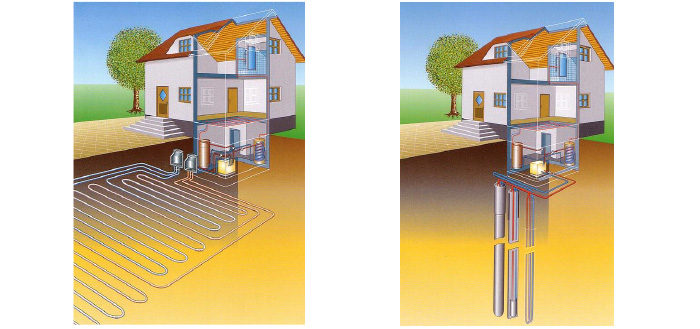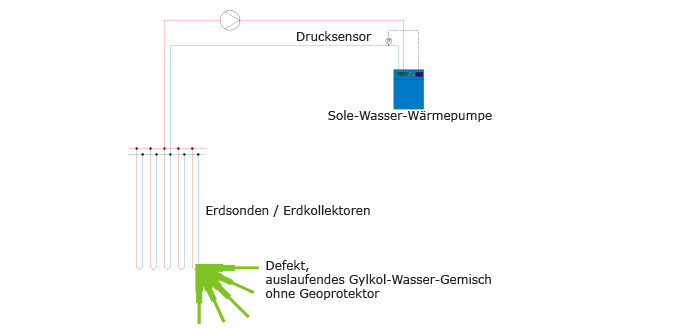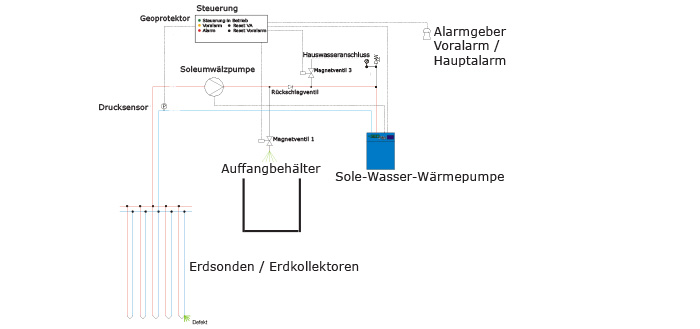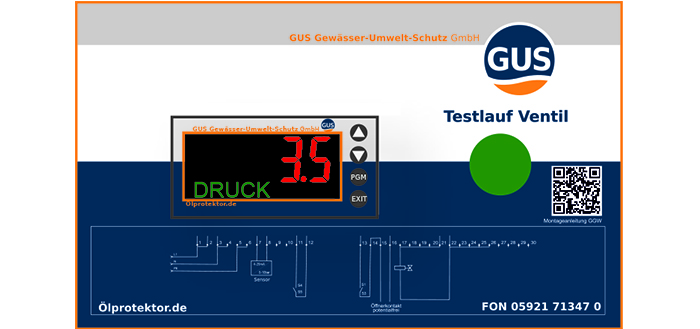GEO Geoprotector
Although heat pumps reduce CO2 emissions and save on heating costs, they are sometimes at risk of leakage.
Brine-to-water heat pump systems consist of a brine-to-water heat pump in addition to the heating units and a brine system. The brine system consists of PE pipes that are installed in the ground either vertically (geothermal probes) or horizontally (geothermal collectors). The brine system is at risk of leakage at joints or the PE pipes themselves due to damage or aging. Glycol belongs to Water Hazard Class 1 and must not enter the ground or groundwater. This can be safely avoided using the geoprotector, as confirmed by expert opinion from the Ruhr University Bochum.
How it works
If a pressure drop is detected via the digital pressure sensor, a pre-alarm is triggered. The heat pump then switches off (DIN 8901 and VDI 4640). There are two possible causes for a pressure drop: insufficient filling, or a
reduction in volume due to the cooling of the brine or a leakage.
If the heat pump switches off, the operator should consult a suitably qualified engineer. If the geoprotector detects a leak, it is flushed with drinking water. A collection basin contains the flushed brine.
The use
The GEO geoprotector has several uses:
1. It prevents a greater loss of brine into the ground.
2. The expensive rinsed brine is reusable.
3. Contamination of the soil with glycol is avoided.
Furtherl Information





